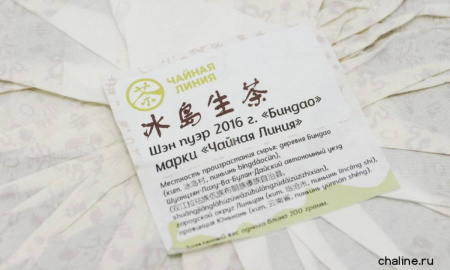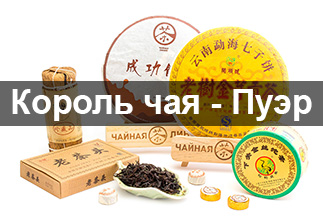-
0 Saturation
-
0 Aftertaste
-
0 Aroma
-
0 Effect
-
0 Balance
-
0 Body
Название: «Биндао шэнча».
Перевод: «Шэн из Биндао».
Кит. 冰岛生茶 пиньинь bīngdǎo shēngchá.
Дата изготовления: весна 2016 года.
Заявленный вес: 200 грамм.
Производство: «Чайная Линия».
Происхождение: деревня Биндао (冰岛村, bīngdǎocūn), Шуанцзян-Лаху-Ва-Булан-Дайский автономный уезд (双江拉祜族佤族布朗族傣族自治县, shuāngjiāng lāhùzúwǎzú bùlǎng zúdǎizú zìzhìxiàn), городской округ Линьцан (临沧市, líncāng shì), провинция Юньнань (云南省, yúnnán shěng), Китай.
В чайном регионе Биндао произрастают многовековые деревья. Он располагается на высотках до 2300 м над уровнем моря и несколько севернее остальных пуэрных областей. Исследования показывают, что в горном чае выше концентрация полезных веществ в листе. Благодаря сочетанию факторов высотности, тропического климата, терруара и агрокультуры пуэр из Биндао считается лучшим во всём Линьцане.
Внешний вид, аромат и вкус
Сырьё крупнолистовое, со значительной частью ворсистых почек. Аромат придётся по душе любителям различать тонкости букета. Настой чистый, светло-янтарный, с блеском на поверхности. Шэн обладает особенными вкусовыми характеристиками. Высокогорность обеспечивает настою тонкое тело, то есть ощущение легковесности жидкости на языке, а также длительное стойкое послевкусие.
Шэн пуэр из Биндао 2016 года от Чайной Линии произведён ограниченным тиражом и является отличным экземпляром для коллекции ценителя хорошего чая.
Впервые опубликовано 20.05.2017.
Copyright © Chaline.Ru
|
Name in Chinese
|
冰岛生茶 |
|
Pinyin
|
bīngdǎo shēngchá |
|
Translation
|
Sheng from Bindao |
|
Country
|
China |
|
District
|
Lincang |
|
Provinces
|
Yunnan (云南) |
|
Habitat
|
Bingdao (冰岛) |
|
Manufacturer
|
ООО "Чайная Линия" |
|
Raw material production date
|
2016 |
|
Year of pressing
|
2016 |
|
Pressing form
|
Bing Cha (Cake Tea) |
|
Declared weight, g
|
200 |
|
Fermentation method
|
Естественная |
|
Type of tea raw material
|
Large trees (100-300 years) |
- Reviews
- Vkontakte
Pu-erh is one of the most unique types of tea, which only gets better with age. Many people, when they first encounter this tea, wondered: why is pu-erh more often found in pressed form (cakes, bricks, tochas), and not in loose form? The reasons for this are related to both history and the practical aspects of storing and fermenting tea. Despite modern technologies that allow the production of loose pu-erh, the shape of pressed cakes remains unchanged. And pu-erh is more often found on sale in pressed form, for example, in the form of cakes or bricks, and loose pu-erh is less common. We will talk about the reasons for pressing pu-erh into cakes in this article.
Puer is a unique Chinese tea that is distinguished by its depth of taste, complexity of aromas and versatility of aftertaste. Its taste characteristics are formed under the influence of many factors, from growing conditions to the brewing method. Let's look at the main ones.
Over time, some consumers who are part of the country's "tea elite" discover mainland Chinese tea. And only a few get acquainted with Taiwanese varieties. The path of a tea person is usually long and thorny, but ultimately it leads to the King of Teas - puer. But not everyone is able to go all the way from ordinary teas to puer and appreciate its qualities.
The tea ceremony occupies a special place in the centuries-old Eastern tradition. And although the essence of this phenomenon remains constant, the nature and external manifestations of the tea ceremony in different nations have their own national characteristics. In each Chinese province, the tea ceremony and the tea used in it are varied: for example, residents of the southern provinces prefer green tea, and residents of the northern provinces - red tea, in Fujian province they more often use Oolong tea, and in Yunnan province Puer tea is widely known.
























































































